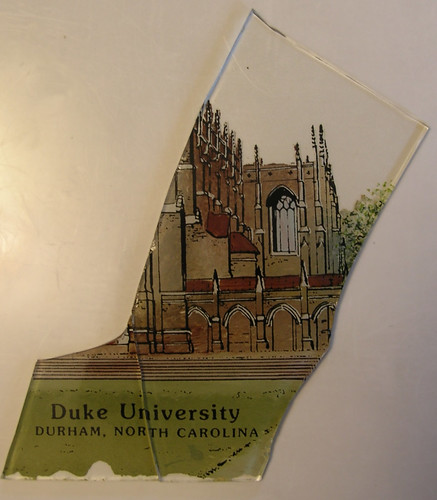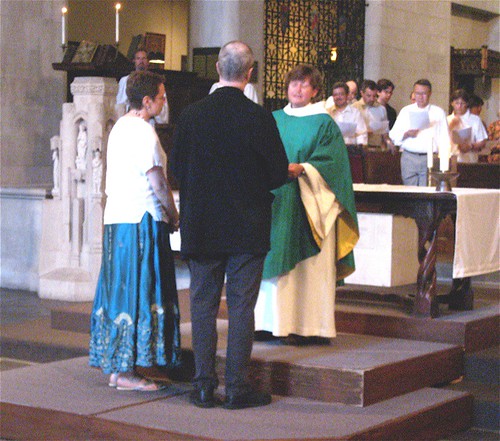My Chance At This American Life
Few people would think that my life provided any poignance or intrigue worthy of popular attention. How much less do I exemplify the sort of haunting, twisted narrative characteristic of Ira Glass’s This American Life? Yet last week, Margaret and I played our parts in an eerie tale of extraordinary synchronicity, or coincidence, or Providence.
It all started at our wedding. Margaret and I had met at Bowdoin College, a mere two weeks into her collegiate career, while I was a senior; we waited to get married until she graduated four years later. Since we were married relatively near Bowdoin, a knot of our classmates crowded the wedding and reception (we had one of those alumni-magazine photos taken), and we received various Bowdoin-themed wedding presents, including a snazzy mirror (like this one) that has adorned our front hall or first-floor rest room in every abode where we’ve lived since then.
OK, enough stage-setting: two weeks ago, while we were cleaning up the first floor in anticipation of the twenty-fifth anniversary of our wedding (hence, the twenty-fifth anniversary of receiving the gift Bowdoin mirror) Saturday pre-reaffirmation party — while no one was anywhere near the first-floor bathroom — the mirror spontaneously crashed to the floor. After 25 years of reflecting our life together, the mirror gave out and shattered.
But not precisely, because the mirror itself didn’t break. Nor, in fact, did the painted-glass illustration of the Bowdoin campus. In fact, it was impossible to tell exactly what was broken (apart from the sawtooth hanging apparatus), because all the broken glass was contained within the protective paper covering that sealed in the back of the mirror.
Well, it was an exceptionally busy day, so we set the mirror aside and worked on the other areas of the public rooms. We enjoyed a spectacular lasagna feast with our wonderful friends, and went ahead with the reaffirmation on Sunday morning.
Having set the mysteriously broken mirror aside in the hurly-burly of occasions and visitors, we tracked it down again a week later and brought it to our customary framery. They agreed with our suspicion, that a glass backing layer had splintered without affecting the mercury mirror. When they peeled away the paper protective layer, though, they found no backing at all for the mirror. Instead, the broken glass seemed to have been confined to the upper portion of the mirror: the painting of the college. But the picture of Bowdoin on the front of the mirror was intact; perhaps there had been a backing layer for the painting?
No; the framer carefully extracted several fragments of glass, and pointed out that the broken bits had themselves been painted. A double layer of Bowdoin? No; the images didn’t match. Then the framer found a large piece and said, “It’s from North Carolina.”
Margaret, who shares my loyalty to the Duke University we both attended, alertly cried out, “Not the University of North Carolina! We can’t have had a UNC mirror spying on our bathroom for 25 years!”
“No,” said the framer, “Here’s another piece.”
In other words: on our wedding day, we were given a mirror with a painting of our college alma mater, behind which picture lay a second painted image — this one, of an institution in which I would enroll five years later, and Margaret twenty-two years later.
The only way this could be weirder would involve a hidden connection to Yale Divinity School (AKMA ’86 and ’87) and Seabury (Margaret, ’03), but since only one of us attended each of those schools, I guess that the mysterious force of serendipity didn’t see fit to add those to our mirror.
Ira Glass, you know where to contact me.


